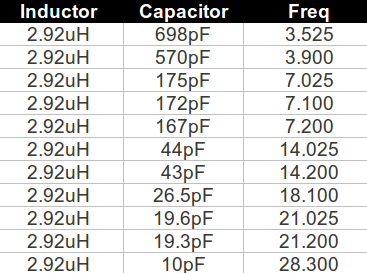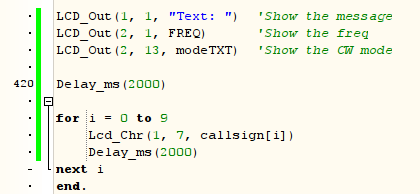Several people I know have End Fed Half Wavelength Antennas.
--I did not, until this weekend.Most of these boxes are pretty simple systems that are designed for QRP type power levels. QRP is fine for me, but my 9 & 11 year old sons (N2BEN and N0AEA) might get a little frustrated trying to make QSOs at 5w. I decided to make a 100w capable version for use with their radio.
The picture below shows the final result of my version 1.0 EFHWA tuner box. Let me explain how we got there so that it makes more sense.
 The knobs for the capacitors & switches + the switch level all are externally accessible on my project box. They are cropped out of this picture... but they are really there.
The knobs for the capacitors & switches + the switch level all are externally accessible on my project box. They are cropped out of this picture... but they are really there.When you look at the schematic below there are three main items:
- Transformer used for impedance matching
- LC resonate circuit (Secondary of the transformer + the variable capacitor)
- High impedance load to simulate an antenna (4.7k resistor shown with the dashed lines since it is optional)
Let's focus on making the LC circuit resonate at the frequency of interest.

Most people are using a T50-2 or T50-6 toroid with about 3:24 or 3:27 turns.
24 turns on a T50-2 transformer is about 2.92uH of inductance.
(This is an important detail to know otherwise the math in the later steps will not work.)
If we take 2.92uH and a known frequency we can figure out what size capacitor that we need to resonate this circuit.

I used the N0FP LC spreadsheet (above) to figure out what size fixed capacitor I might need across several bands. This gave me an idea of what size variable capacitor that I might need to cover several bands. The list below shows that a 25-175pF variable capacitor + our 2.92uH inductor might cover 40m --> 18m.

The reality is that for medium power parts it is hard to find a variable capacitor will cover a range as wide as what I was looking for.
- The ones that I had in my junk box stash are close but not quite close enough.
- I then looked at my collection of door knob capacitors to see I could find a combination of variable+doorknob that might work... nada.
- I then decided to look at using two variable capacitors in series. This helped with 17m and 20m but then made it hard to get a match on 40m. I ended up using a switch so that I could swing the second capacitor in/out of the circuit.
You should also notice that I scaled this from a T50-2 to a T130-2 toriod. (To make sure that it could handle 100w.) 16 turns on a T130-2 core is ~2.92uH.
Instead of a fixed turns ratio on the transformer I put a series of taps on the primary so that I use a 5 position switch to select the number turns on the primary winding.
1:16, 2:16, 3:16, 4:16, 5:16
To test this I applied a 4.7k resistor to simulate the antenna and counterpoise. Sure enough it will tune up on 40m, 30m, and 20m. 17m is still looking a bit elusive hinting that my minimum capacitance is not quite small enough. I will need to test it in the real world with an antenna and see how it plays.

As you can tell from my first photo and this schematic... this little project became a bit more complex than I originally planned. (Because of the power levels and number of bands that I wanted to be able to cover.)
How to tackle this project:
- Make a LC resonate on a specific frequency. (You can use a different core type and size, you will need to calculate amount of inductance to use in your LC formula)
- Then we use the primary to secondary ratio on the transformer to transform our 50 ohm radio and transmission line to our high impedance antenna. (Simulated by the 4.7k resistor at our workbench shown with the dashed lines in the schematic.)
Obviously there is a TON of detail that I am not getting into in a single post. The links below provide some good background on the EFHWA antenna. These are the primary articles that I used to get up to speed for my project:
http://www.swlink.net/~w5jh/efhwa_at.htmhttp://www.aa5tb.com/coupler2.html
http://www.aa5tb.com/efha.htmlhttp://www.aa5tb.com/efha_wrk.htmlNext steps:
- I need to measure and cut some wire a 1/2 wavelength long on the frequencies of interest.
- Test them on one of our upcoming camping trips.
I will probably build a QRP version of this box. Finding a capacitor for the range that I need should be easier at low power.
73 de NG0R



































